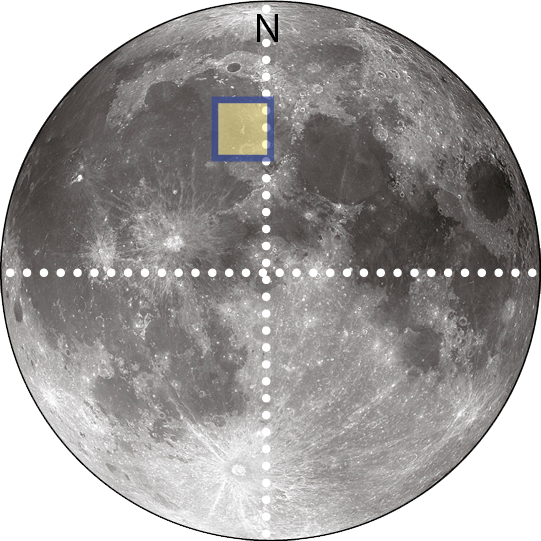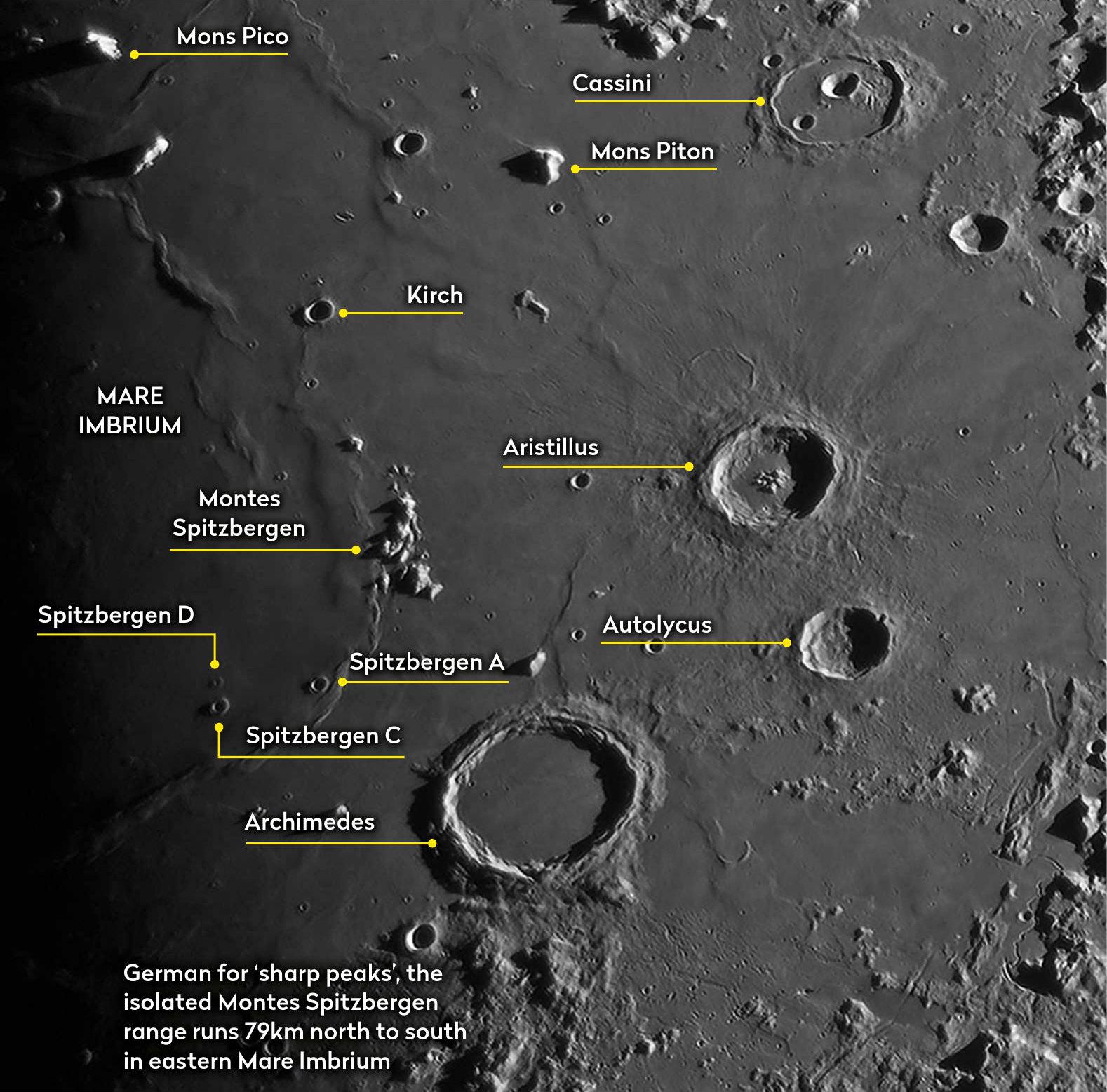April’s top lunar feature to observe

Montes Spitzbergen
Type: Mountain range
Size: 79 x 24km
Longitude/latitude: 5.2° W, 34.5° N
Age: 3.2–3.9 billion years
Best time to see: First quarter (29 & 30 March, 28 April) or six days after full Moon (13 April)
Minimum equipment: 100mm refractor
Montes Spitzbergen is an impressive, solitary mountain chain located in the eastern region of Mare Imbrium, 150km north of the centre of the flooded 83km crater Archimedes. Surrounded by the ‘flat’ lava of Mare Imbrium, the range appears dramatic, especially when the Sun is low in its sky. Montes Spitzbergen was named for its resemblance to the largest island in the Arctic’s Svalbard archipelago. The name is German for ‘sharp peaks’.
Despite their impressive appearance, the mountain peaks rise to a fairly gentle height of 1.4km above the surrounding lava plains. The range measures 24km east to west at its widest point, and stretches for 79km north to south. The mountains in the range are not continuously joined, interrupted by lava at a location slightly south of the mid-point. Two isolated mountains appear east and west of the gap. While looking in the region, head south towards Archimedes where you’ll find a couple of additional isolated mountain massifs. Similarly, head north from the main range, first past a trio of low-level isolated peaks, then on to a more rectilinear mountain, again on its own against the Imbrium surface.
“When the Sun is really low, the shadows become jagged and sharp”
As with any relief feature, the real fun begins when the Sun gets low. When high, near full Moon, Montes Spitzbergen appears bright against the darker lava of Mare Imbrium. However, when the Sun’s altitude drops, the individual mountains start to cast shadows. As the material surrounding the range is relatively flat – we’ll come on to that in a moment – the lengthening shadows to the east when the Sun is setting or west when it’s rising, look particularly dramatic. At times when the Sun is really low from Montes Spitzbergen, as is the case when the terminator is nearby, shadows become particularly exaggerated, jagged and sharp. This can give a false impression of height.
The floor of Mare Imbrium looks quite flat when the Sun is high in the mare’s sky. But when it’s low, lumps and bumps become very evident. A number of impressive wrinkle ridges can be seen in the vicinity, Montes Spitzbergen appearing to cross one that arcs north to south and then west, located further to the west of the range. A wrinkle ridge is a tectonic feature that forms after a large area of lava cools and solidifies.

A small group of three craters lies to the southwest of Montes Spitzbergen. The eastmost one is 7km Spitzbergen A, similarly sized Spitzbergen C located 45km further to the west. The tiny 3km craterlet 13km north of Spitzbergen C is Spitzbergen D, a good test for a 200mm instrument under steady seeing.
There is plenty of impressive lunar real estate in the immediate vicinity too, the stand-out feature being 83km Archimedes to the south. 154km to the east is 55km Aristillus which has a superbly detailed central mountain complex. Look out for the unnamed ghost crater located immediately to the north of Aristillus. Further south is 40km Autolycus.